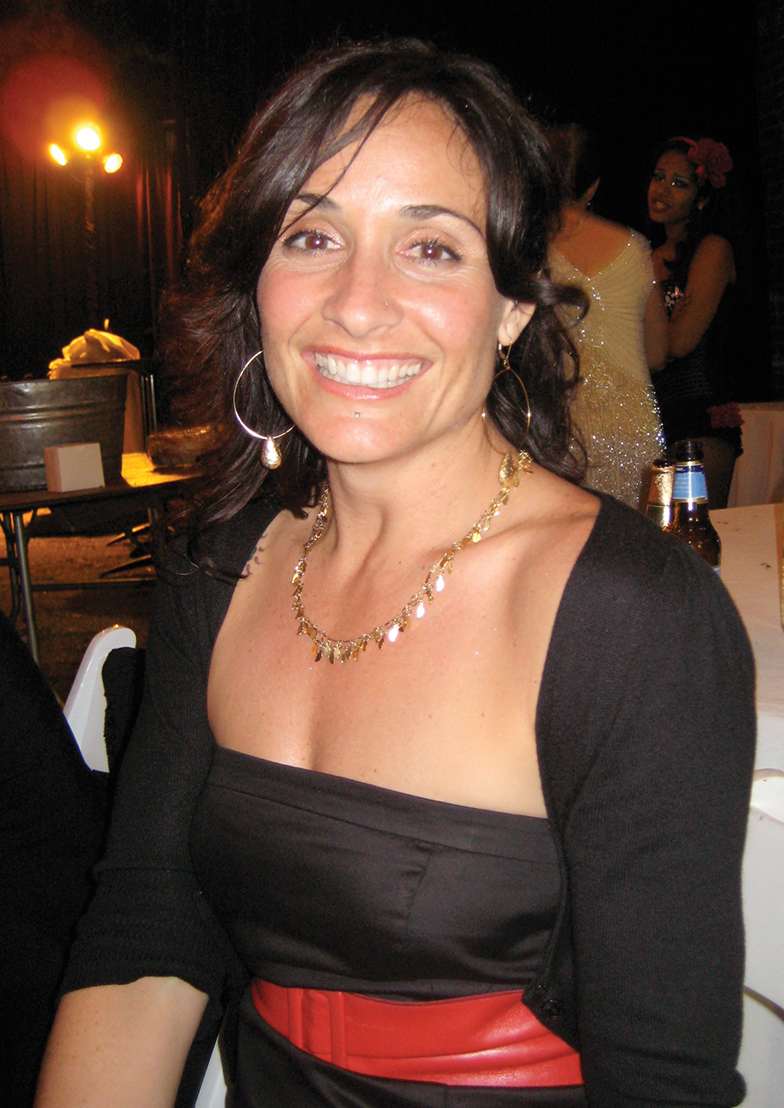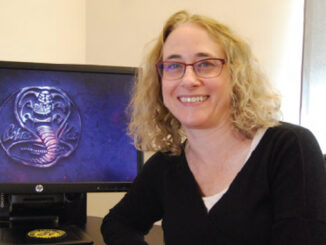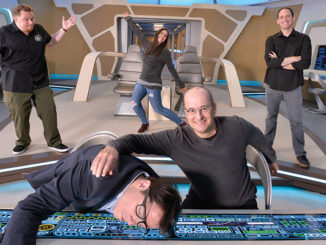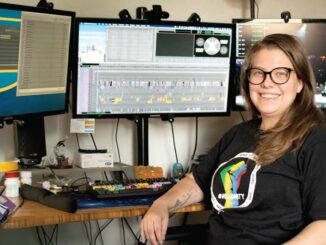
by Debra Kaufman
With the advent of the digital nonlinear editing technology, the workflow in the editorial suite dramatically changed. And it’s never stopped changing. With each new format, new camera and new digital capability, the editorial workflow under-goes an evolution.
Most recently, more tasks that once went out-of-house are now being done in the edit suite. Online editing, temp sound mixes and color grading have found a home in editorial. On the positive side, these tasks stay in the hands of Guild members, whereas they once went to post facilities, often non-signatories.
But there’s a flip side to every improvement, and in this case, it’s the fact that the work falls on the already beleaguered assistant editors. “It’s a fast-paced environment with a lot of work, but it’s very rewarding,” says Jouvens Exantus, who is an assistant on reality TV shows, including Project Runway. “It’s a good thing that we’re getting new technology, and it can’t hurt to learn a new process. The more tools you have in your toolbox, the more equipped you’ll be for an ever- changing workplace. You’ll also increase your chances at landing another job.”
“When you’re slamming out a show every four weeks, assistants don’t have time for color correction and building onlines.” –John Vitale
Although assistant editors do embrace the chance to learn more, the question becomes: How much work is too much per assistant? Does bringing this extra work in-house mean that an extra assistant is required? And what does the assistant lose—mentoring time, for example—by taking on these extra tasks?
EXTRA TASKS
The first thing to note is that not every project is bringing in extra tasks. “Each show is different, but network series tend to have a much tighter schedule than your average feature or cable show,” says assistant editor John Vitale, who sits on the Editors Guild Board of Directors. “When you’re slamming out a show every four weeks, assistants don’t have time for color correction and building onlines.” Vitale notes that doing this additional work is similar to the days when assistants synched dailies on film and conformed a work print. With one major exception: “Because everything is electronic, it’s presumed we can do this with the same small crew we now have,” he says. “But when we synched dailies on film, there were four or five assis- tants!”

Marty Heselov, who also represents assistants on the Guild Board, has been working for 20 years in the field. “We’d rather have editorial work brought inside the cutting room to the assistants rather than lose it,” he says. “The good news is that there is more work. The bad news is that assistants who may already be trying to stay up-to-speed with all the new tech work––and are already possibly under- staffed––are being asked to increase the volume of their work. They become more technologically proficient. But in trying to keep up with the work, they are less able, and have less time, to be mentored by their editors.”
The assistant editor has always struggled to keep the balance between accomplishing all of his or her tasks with learning the art of editing. “What we have is an age-old historic issue,” says Heselov. “But you can’t learn or be mentored in editing if all your time is spent staying on top of everyday changes in workflow, technology and formats. Balance is the issue…and the weights are constantly changing.”
Sara Mineo, who just finished assist- ing on AMC’s The Walking Dead, has seen her job grow in recent years. “I’m doing all the temp sounds,” she says. “Nobody can watch a cut dry any more. If someone in the scene picks up keys, I have to put that sound in there. If they shot MOS, I’ll spend hours putting in horse footsteps. On a TV show, I can’t send every version of the cut to the sound department, because we don’t have the time or budget for it. I don’t mind cutting sound, but I didn’t get into editing to be a sound editor; I want to be a picture editor.”
The biggest change in recent years has been the move away from tape, instigated by the new digital cameras that record to solid media. “Two years ago, I worked on a standard Avid Media Composer, so I was laying off to Beta or DV tape and turning things over to the sound or music department,” recalls Mineo. “It was a straightforward system that I was accustomed to using. I’d make a tape and the tape would go to a post house.”
Now, says Mineo, that’s all changed. She’s no longer sending a tape to an out- side house to make all the additional tapes and QuickTimes for different departments. “For the show I worked on this year, I did all of that,” she says. “Now, creating all the versions of an hour-long episode for sound, music and visual effects departments is just part of my job.”
NEW WORKFLOWS
Part of what makes these new tasks so time-consuming is the proliferating number of new workflows and their resulting formats. “What’s happening is that everybody is taking advantage of whatever newly emerging cost-efficient or time-saving format they can work with,” says Heselov. “There are now

10,000 types of sound and picture for- mats. Even five years ago, it was much simpler. With the explosion of new work- flows and formats, assistants have to be able to learn and communicate in those new languages.”
Exantus points out that, with digital output from cameras, getting the footage into the system is much easier than when assistants had to digitize tape. “But now there are a lot more chances of making mistakes with labeling the tapes,” he says.
So much technology know-how is being asked of assistants that the job itself has metamorphosed. “We have to be know-it-alls with everything,” acknowledges Exantus. “A lot of our work is now like IT [information technology] work.” Mineo agrees: “Some of my co-assistants are brainiacs with computers. I’ve learned a lot––but mostly from other assistants and editors I’ve worked with. The tech teams don’t know much more than we do, so you can’t expect your tech department to save the day when the computer crashes. And we certainly can’t always save the day.”
“There’s been more and more expectations of the technical prowess on the part of the assistant,” agrees Heselov. “No assistant is afraid of more work, by any means. You can’t be lazy and be in our job. But will the networks and studios provide the personnel and hardware necessary to support the new technology and workflows? And is there physically enough time to also be mentored by the editor? Or is the best assistant ultimately going to be the best technician?”
Mineo enjoys the training programs at the Guild’s Hollywood office, but she’d like to see more frequent opportunities. “It would be great if people could go to the Guild every Saturday for two months and have a class offered,” she says. “I’d like to have the training department present new workflows that we see people using, and show us what we are expect- ed to do and how to go about it.”
“Now, creating all the versions of an hour-long episode for sound, music and visual effects departments is just part of my job.”–Sara Mineo
From Exantus’ point of view, the assistant’s role has changed beyond the knowledge needed to understand and fix computers, whereby assistants are now answerable to producers as well as the editor. “Ultimately, we’re assistant editors,” he says. “We’re there to support the editors, but we’re really assistants to the entire production. An editor can ask me to help find footage or help out with an audio track. Then, I’ll get a call from the producer to go take something to the network. It’s always a weird dynamic figuring out whom to please first in order to make everything work. It’s almost like we’re not assistant editors but production assistants. We’re making sure the show goes out.”
FASTER & EASIER?
In the mindset of some producers and executives, digital workflow has also translated into faster and easier. But it’s not that simple. “The system cuts our normal digitizing time in half,” says Exantus. “To producers, it means that we can do with one less assistant, but that’s not realistic. You might still need that extra person to support all the additional issues we come across. The problem I have is with what people expect from an assistant––that one person can support 10 editors and, without stepping on any- one’s toes, meet the needs of the producer. Sometimes, we’re understaffed.”

Part of the problem is that, because each workflow has its own peculiarities, new issues can arise. “But producers don’t test out the new technology,” claims Exantus. “They take it on without understanding that we have to go through all the kinks and make it work for everyone. We don’t have a training period; it’s what we’re expected to do. In a perfect world, you’d have another assistant or two to support the editors and have a good mix of problem-solving and technical work.”
Where this affects assistant editors most is the lack of time and opportunity to sit by the editor’s side when he or she cuts, or to get the chance to cut a scene and receive feedback on it. “One of the things that gets lost in this very tight schedule is the mentoring between editors and assistants,” states Vitale. While acknowledging that chances for an assistant to cut a recap or trailer for a show do exist, he adds, “Although that seems like a good opportunity for the assistant, what’s really happening is that the studios are taking advantage by not paying an editor to do that,” he adds. “Assistants want a chance to cut. Editors should allow the assistants to cut a scene and give notes—that’s more of a teaching experience than cutting teasers or recaps.”
That’s easier said than done in the new workflow, where the assistant often isn’t even in the same room as the editor.
n the days of film, the editor and his or her assistants had more time together, according to Heselov. “Editing included a physical labor process, and everyone understood we needed time to cut and splice film,” he says. “Directors, producers and studios left us alone at that point. That was when the art and the craft of editing were passed down.”
Mineo has only worked digitally. “I did- n’t have the apprentice system as part of my career, but I really like the idea of it,” she says. “I feel there isn’t a lot of opportunity for training in the cutting room on TV shows. I don’t know if it’s even practical to ask or hope for it, although I would certainly love it.”
“With the explosion of new workflows and formats, assistants have to be able to learn and communicate in those new languages.” –Marty Heselov
She makes a point of talking about scene, story structure and character motivation with the editors with whom she works. “I’ve been pretty lucky in that the editors I work with have been supportive and ask if I want to take a scene if I have the time,” she says. “We’ll sit and talk about it afterwards. But the last show I was on, we didn’t have the time, because it was a pilot and the editor has to have his hands on everything. Also, with a lot of TV shows, it’s a three/two situation––where we have three editors and two assistants––so we don’t have time to cut the scenes. With only two of us, we are always working on a new episode. And our assistant work takes precedence.”
MENTORING TIME
Exantus wishes there could be a certain time of day set aside when an assistant could sit with an editor. “But with a challenging schedule and workload, it’s hard to set time aside to actually work with an editor,” he says. “We often study the editor’s timelines for insight, but it’s not the same as a mentor-mentee relationship. At the end of the day, we’re problem-solvers and this is what we signed up for. No two days are alike. The job of an assistant editor is challenging but exciting at the same time.”
Vitale recalls how he was mentored. “When I finished synching dailies or put- ting them in the Avid, I’d ask to sit and watch the editor cut and he was gracious enough to let me watch and ask questions,” he says. “That’s how I learned. I did that through two movies, two pilots and two TV series.”
But is that even possible now? Vitale notes that he was on a series for CBS with three editors and three assistants. “But there’ll be situations where there’s only one Avid for three assistants, so you can’t cut a scene,” he says. “You have to stay very late and do it on your own time, but the schedules are so crazy there’s not even time to do that. Someone mentored the editors who have been cutting for 20 years. But if your editor doesn’t help you along, bring you on as a co-editor or mention you to a producer, it’s difficult to get those opportunities.”
The continuous change of post-production technology shows no signs of abating. And the burden of adapting to these challenging workflows has become just one more part of the job description for today’s assistant editors. As they labor to make it all work seamlessly, and forego the traditional mentoring opportunities in the process, it begs an important question: How will the great editors of the future emerge?






